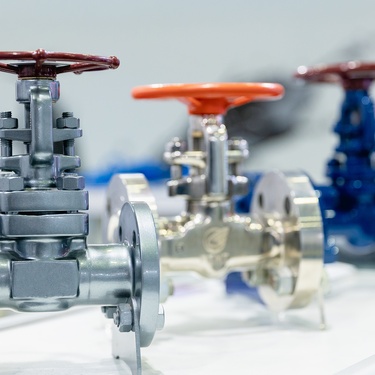
Valves are essential components in many industrial systems and business processes, regulating the flow of gases and liquids. They ensure efficiency, safety, and control across a wide range of industries such as oil and gas, water treatment, manufacturing, and power generation. Understanding the types of industrial valves and their specific uses is fundamental for engineers and technicians tasked with maintaining or designing these systems.
Valve Styles
Industrial valves come in various styles, each tailored to control flow in unique ways. Commonly used valves include gate valves, globe valves, ball valves, check valves, and butterfly valves.
Gate valves excel in applications requiring a full-open or full-close operation, offering minimal flow resistance. Globe valves are ideal for throttling purposes, allowing precise flow regulation.
Ball valves are valued for their durability, leak-tight sealing, and quick operation, making them a go-to choice for applications requiring minimal maintenance. Check valves serve to prevent backflow, ensuring that fluids move in only one direction, while butterfly valves provide a lightweight and economical solution for managing large flow volumes in low-pressure systems.
Valve Materials
The performance and durability of a valve depend significantly on its material. Common materials include brass, stainless steel, cast iron, and PVC, each with its advantages and limitations.
Brass is a common material in low-pressure systems due to its corrosion resistance and affordability. Stainless steel valves offer excellent strength and resistance to high pressure, temperature, and corrosive environments, which makes them suitable for demanding industrial applications.
Cast iron is a popular choice for its durability in high-capacity systems but is less suited for corrosive environments. Poly or PVC valves have unique benefits and are lightweight, cost-efficient, and ideal for low-pressure applications in non-corrosive pipework, such as water distribution or chemical transport.
Applications of Industrial Valves
Diverse industrial sectors use different kinds of valves thanks to their versatile designs and functionality. The oil and gas industry uses ball and gate valves for controlling pipeline systems. Water treatment facilities deploy butterfly valves for managing the distribution of treated water, while check valves are prominent in preventing backflow in pumping systems.
The food and beverage industry often employs stainless steel valves for sanitary handling and transport of ingredients, ensuring compliance with health regulations. Each application relies on valves to meet specific operational and regulatory requirements.
Factors To Consider When Selecting a Valve
Selecting the correct valve requires careful evaluation of application needs and environmental factors. The type of media you’re working with, such as gas, water, or oil, affects material compatibility and valve style selection. Operating pressure and temperature ranges must align with the valve’s specifications to avoid performance failures.
Engineers must also consider the required flow rate, as some valves are better suited to throttling than others. Other factors include maintenance requirements, installation space, and budget constraints. Making the right selection promotes safety, system efficiency, and long-term operational reliability.
Streamline Operations With the Right Valve
Selecting and employing the correct industrial valve is vital to maintaining efficient and safe processes in any industrial system. Understanding the various valve types and their applications provides engineers and technicians with the knowledge needed to make informed choices. With careful consideration of operational demands and environmental factors, the right valve can help eliminate inefficiencies and contribute to your system and overall business’s success.
Bio: Casey is a passionate copyeditor highly motivated to provide compelling SEO content in the digital marketing space. Her expertise includes a vast range of industries from highly technical, consumer, and lifestyle-based, with an emphasis on attention to detail and readability.



















